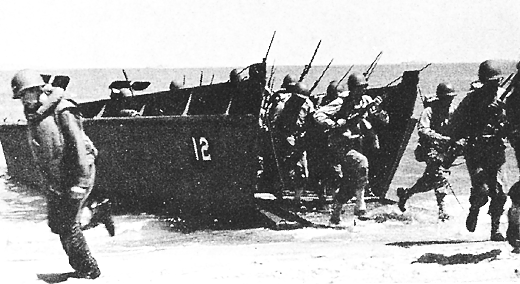What was the problem?
Lack of equipment and inadequate organization.
The most apparent equipment shortcoming was the wrong boats for the task.

The Amphibious Transports (APA) carried many boats, but most were the first generation of Higgins boats, the Landing Craft, Personnel (Large) or LCPL. When the boats grounded on the beach, marines had to clamber over the side into the water and then wade in to shore. Not too bad for the marines, but what about the equipment? Much of it had to be manhandled over the side of the boats as well.
The marines and the US Navy Bureau of Ships recognized early on that this was a problem. Tests were done in the late 30's of a modified landing craft with a bow ramp, the LCP(R). The photo below shows that this was an improvement, but the ramp proved to be something of a bottleneck for troops anxious to hit the beach. There were some LCP(R)'s at Guadalcanal, but not nearly enough.

Some LCP(R)'s remained in service after the war. Here is a photo of an LCP(R) carried on the helicopter platform of USS Cabildo (LSD-16) at Yokosuka, Japan in 1959. The fierce decoration on the bow indicates it belonged to an underwater demolition team (UDT). UDT later morphed into the SEALS.
The final design improvement was to fit a full-width bow ramp. This allowed the landing craft, now designated the Landing Craft, Vehicle, Personnel or LCVP, to deliver 36 combat-equipped troops to the beach, or one jeep and a crew of half a dozen.

This became the work horse of ship to shore movements. But they weren't available at Guadalcanal.
Here is a fully-loaded LCVP on its way to the beach in 1959:
The other missing ingredient was organization for efficient management of the troops, equipment and supplies delivered to the beach.
The Guadalcanal landing was rehearsed at Fiji before the invasion, but for some reason the problem of moving stuff off the beach either wasn't identified or wasn't resolved. It is also possible the ships hadn't been "combat loaded." This was a technique to load equipment in reverse order of its planned need, rather than to make most efficient use of cargo space.
Later in the war, combat loading became routine, and a special organization called a Beachmaster was established to manage the cargo and equipment.
These techniques were yet to come.






No comments:
Post a Comment